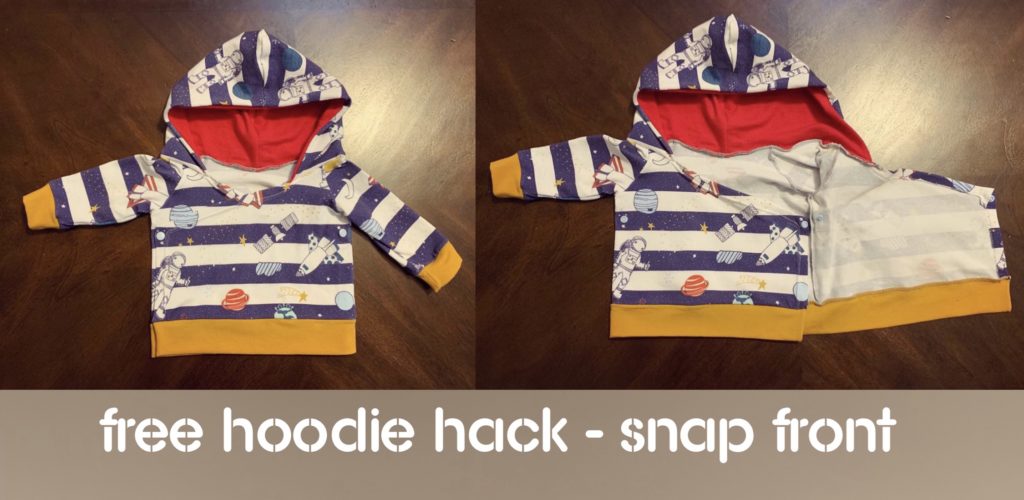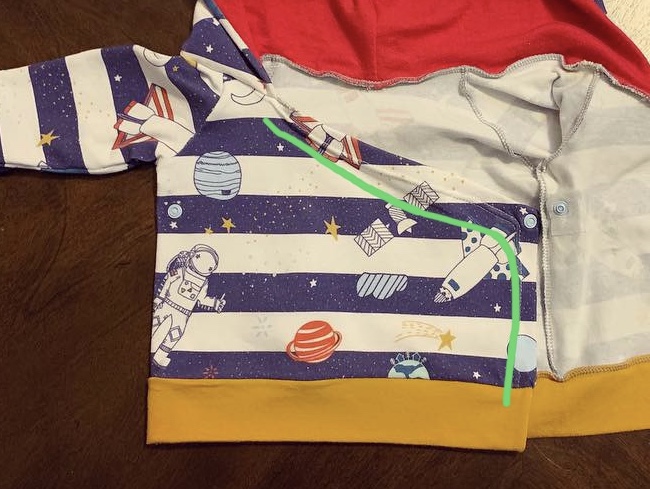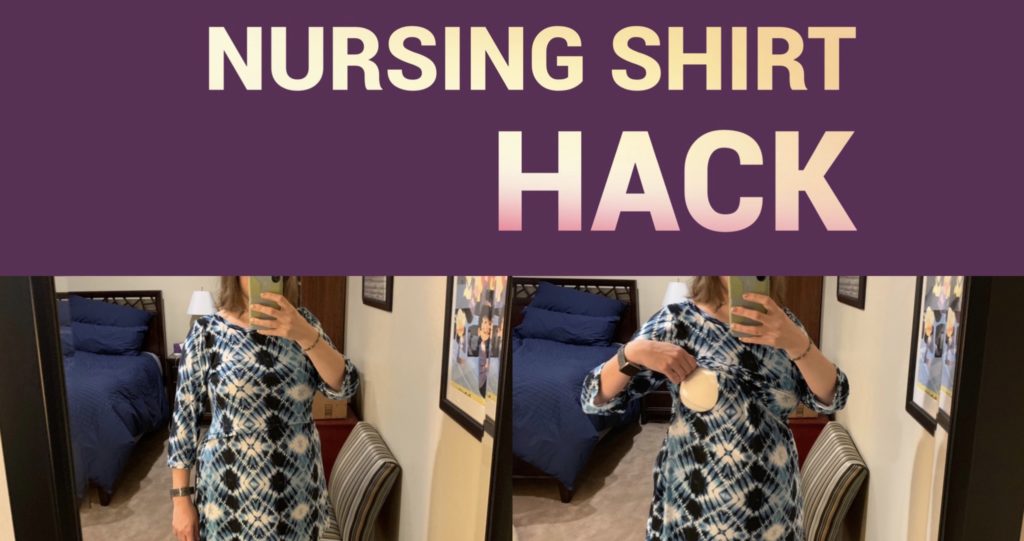
This post explains how I modified a standard knit top pattern (specifically, the Hallå Patterns – Agnes Swing Top) to be a nursing shirt with a lift-up layer and side access. This technique could be used to modify any solid front knit top you’d like, though.
Find a pattern for a knit shirt. Use a fabric that has good stretch recovery and 4 way stretch, like rayon spandex or double brushed poly spandex. Once you’ve found a pattern you’d like to modify, take your measurements and cut out the pattern for the correct size. Print out (or trace) a second copy of the front pattern piece. If they are designed on the fold, they will look something like this:
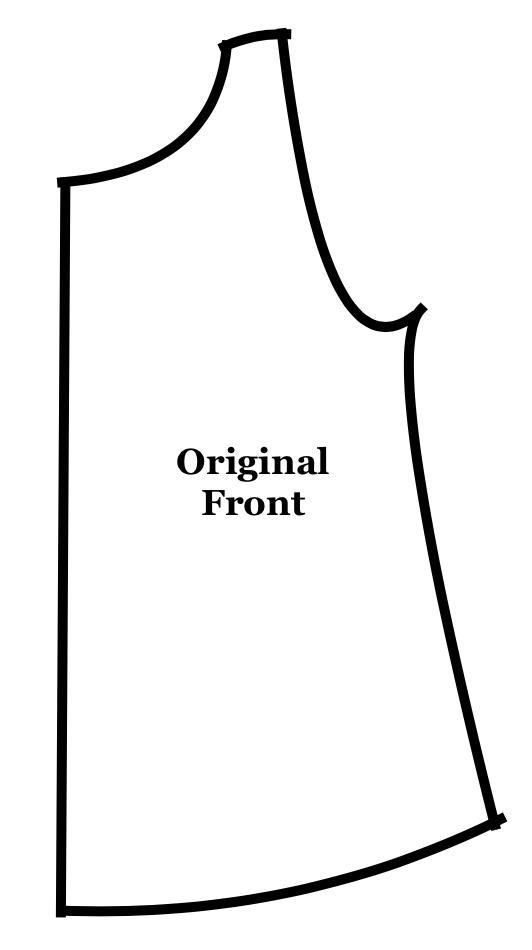
If the shoulder seam on your original pattern is less than 2 inches, adjust the neckline so that the shoulder seam is a bit wider. This will support the weight of the additional layer and prevent it from tearing. Attach scrap paper to draw the extended neck line. Do this on both top pattern pieces, and the back pattern piece to match. On one of your top pattern pieces, cut the bottom half off, approximately 8 inches below the bottom of the armscye. This will become the front overlay:
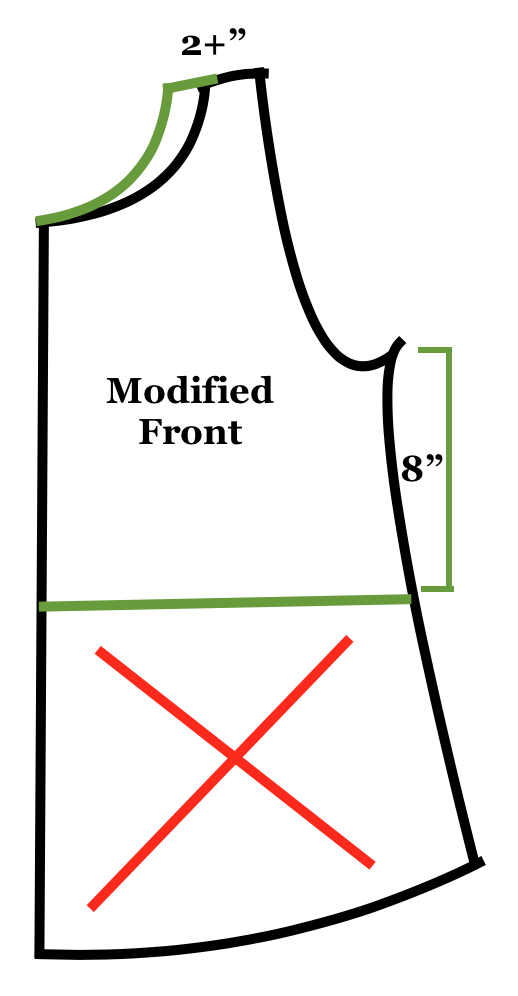
On the other front pattern piece, draw an exaggerated armscye and neck line. The lowest point of the new neckline should be about 2.5 inches below the original neckline, and the bottom of the armscye should be about 4.5″ below the original one, and extend about halfway into the original pattern piece. This piece will be the nursing layer:
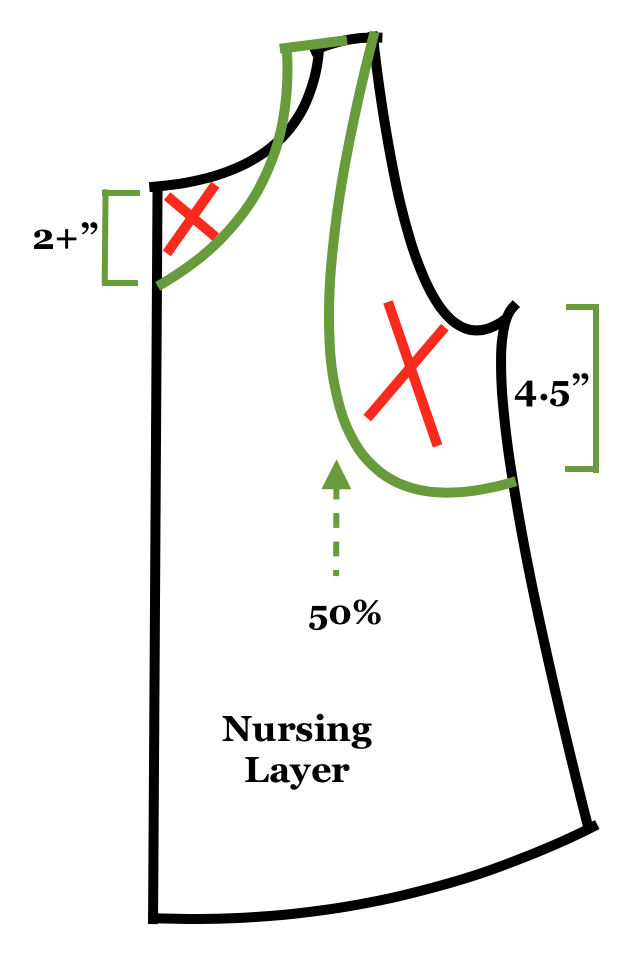
I recommend adding a notch in the middle of the side seam so it will be easier to line them up later. Stack your two front pattern pieces on top of each other, and cut or mark a notch on both pattern pieces (below, in blue) in the center of where the side seam will be. Cut out your fabric pieces. If your fabric has a pattern, you may want to fussy cut the front overlay so it matches the same pattern position as the nursing layer, so that it appears to be seamless when stacked.
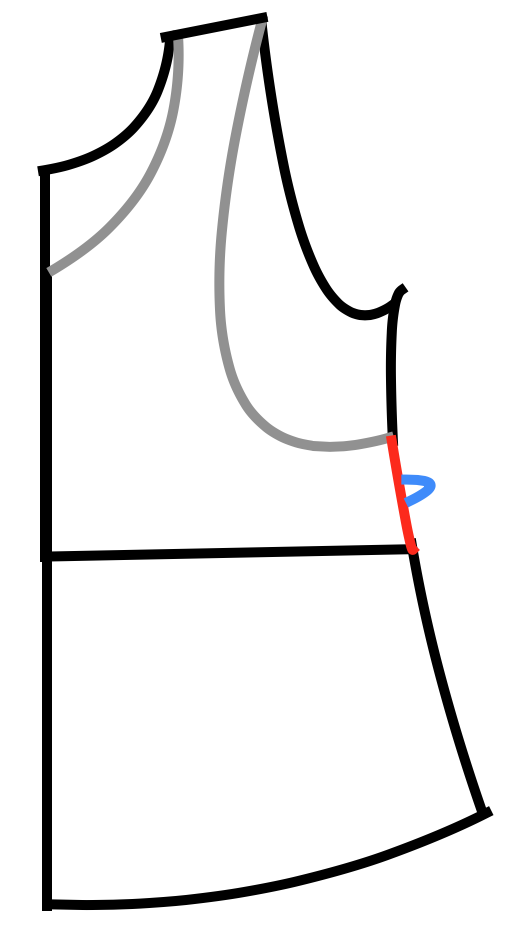
Fold under and top stitch the flat bottom edge on your front overlay, using a double needle or stretch stitch. I did not hem the edges or neck of the nursing layer since they aren’t visible from the front and I didn’t want to add extra bulk, but you could if you wanted.
Lay the front overlay on top of the nursing layer (right side facing up for both, like it will look when you wear it). If you have clear elastic, you can add some in the shoulder seams to reinforce them further. Sew the two pieces together at the shoulders, and on the sides (below, in red).
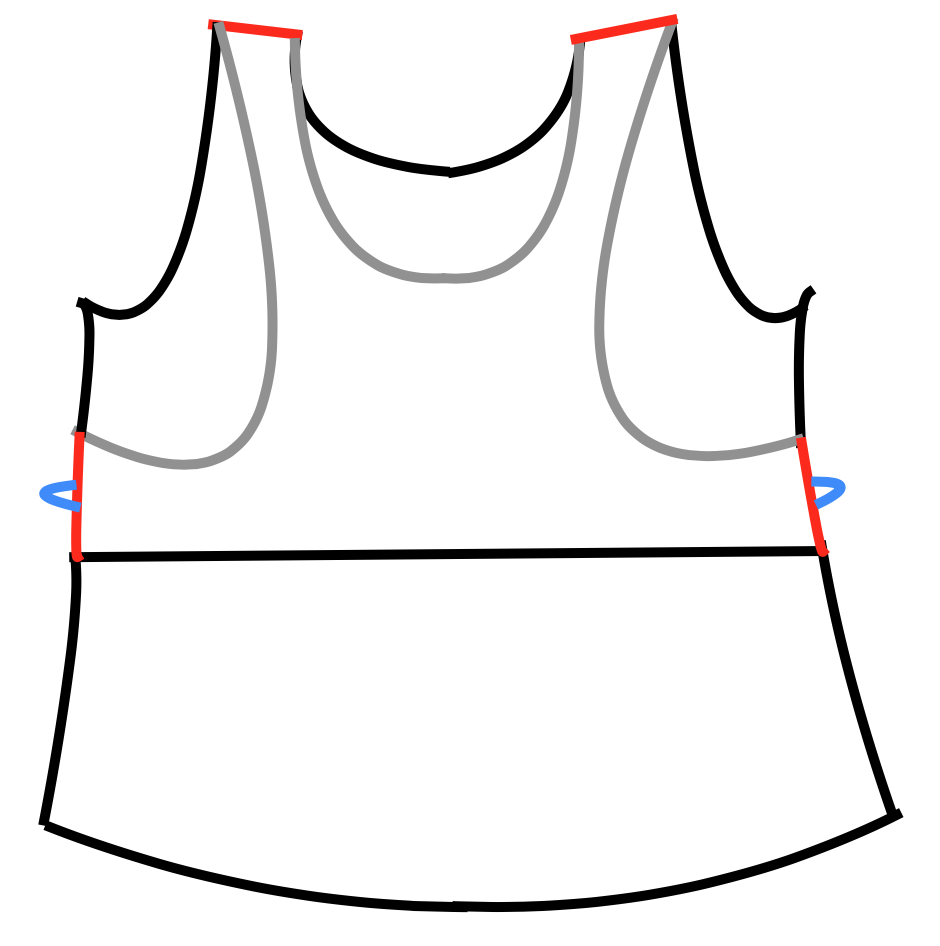
Now that you have your front overlay and nursing layer attached, continue with the original pattern as designed, treating that combined layer as the front piece.
That’s it! Comment if you have any questions, or if this hack worked for you.
